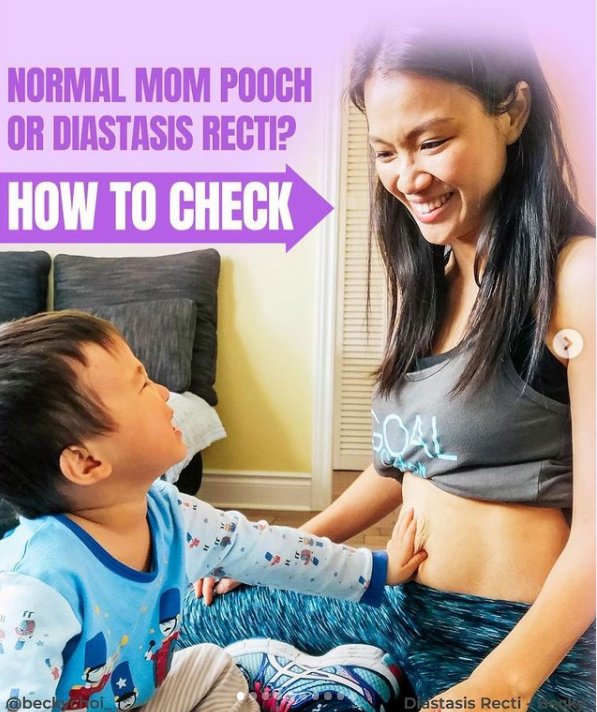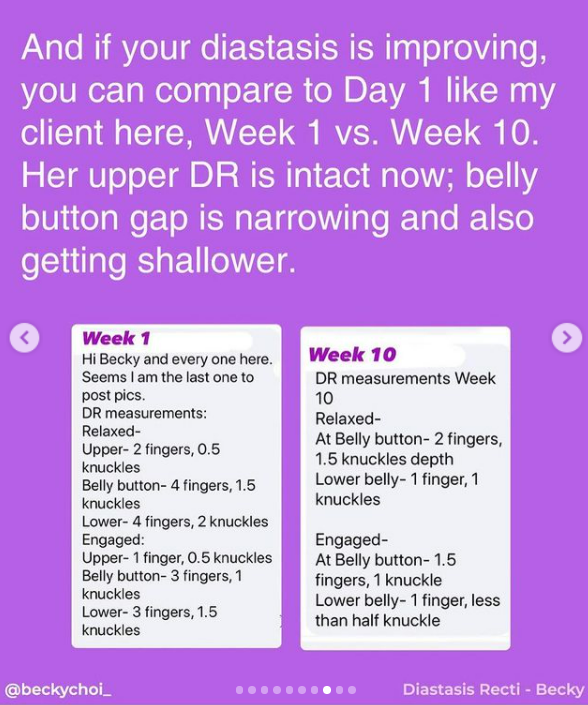It is a given that all women develop diastasis recti in their pregnancy process, where the abdominal muscle naturally separates because it gives space to your growing baby. However, the postpartum gap varies from women to women whether you have a normal case or a severe case.
But first, let’s define and elaborate more on what is a normal diastasis gap.
In terms of measurement, a normal diastasis gap during postpartum is 6 cm or below. If it’s wider than that, around 6 cm to 10 cm and even more, then you have a severe diastasis gap, in the perspective of measurement.
However, there are also other indications to determine whether you have a more concerning diastasis or not. So let me give you two characteristics of a diastasis where you should raise your concern or lower your concern.

- SKIN
- The physical appearance of the skin can be an indicator of the severity of your diastasis because it is also a connective tissue. Depending on how your skin looks stretched out, that’s how bad your DR is.
This is not the same with stretch marks because that’s a different physical appearance but check on your loose skin because the looser it is, hence, a wider diastasis gap.
2. RESPONSIVENESS OF THE FACIA
- This is the most indicative sign to determine the level of your concern. If the fascia responds with tension to a challenge then you have a normal diastasis, if it is unresponsive, that is more concerning.
- The challenge/exercise to see if your fascia responds is to do a small head curl-up to see if the diastasis gap closes and the fascial tension increases because often, this will create closure but no tension. Afterwards, exhale prior to raising your head. If you generate more tension before exhaling, then your fascia is more responsive, hence a less severe/normal diastasis. In contrast, if you have no change in fascial tension, then you have a bad diastasis.

So the most important key here is to determine the responsiveness of your fascia because sometimes, in other cases, they have a larger gap as determined with the measurement we set (6 cm and beyond), but during the tension challenge, their fascia is more responsive, then they still have a less severe diastasis.
Do not put your focus and stop obsessing about the gap, this is also stated in my previous Instagram post because there are many other ways to monitor your progress, especially when you’re doing exercises, and see if you’re in the right direction. It is better to focus and check on how strong your core is and how you can engage it with ease and not lose control.
If after reading this blog post and you happen to have a severe diastasis, do not be alarmed! Seek help and assistance if you need to, especially when you feel lost in terms of the things you should do to address your diastasis.
Feel free to contact or DM me on my Instagram (https://www.instagram.com/beckychoi_/) as well for consultation or you may also enter my Tummy Warrior program that has helped a lot of mamas already in healing their DRs no matter how severe it was.
Remember to stay confident, after all, you are a mother who carried and brought a wonderful human into this world.
Just a disclaimer that these characteristics are rooted from my experience with my clients and may not be uniform to all mothers who have diastasis. As mentioned in my previous blog posts, having a diastasis is on a case-to-case basis, so in some mothers, they may have significant skin changes and an unresponsive fascia, but may have a less severe diastasis


